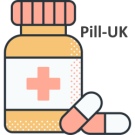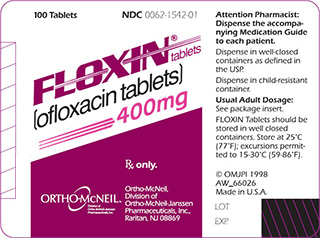Floxin is an antibacterial drug, an antibiotic belonging to the chilones class. It helps to cope with various bacterial infections alone or in combination with other medicines. Let’s see for which diseases it is best suited, who needs it and the possible side effects of its use.
You can buy this medicine in our pharmacy. You will be pleasantly surprised by the price and the possibility to order the medicine without a prescription. Fast nationwide delivery, anonymity, availability of all information and the fact that you do not have to leave home to place an order will convince you that the online pharmacy is super convenient.
What is Floxin and what is it used for?
Floxin is a medicine that helps to fight the symptoms of many bacterial infections, such as pneumonia, skin infections and bronchitis. It is important to diagnose the disease correctly, as this antibiotic only treats bacterial infections. In addition, it is not effective for viral infections such as the common cold or flu.
Indications for use of Floxin
Prior to treatment, appropriate analyses and sensitivity tests should be performed to isolate and identify the microorganisms causing the infection and to determine their sensitivity to the active ingredient of ofloxacin.
Infections for which Floxin is used include:
- acute bacterial exacerbations of chronic bronchitis;
- community-acquired pneumonia;
- uncomplicated skin and subcutaneous tissue infections;
- uncomplicated urethral and cervical gonorrhoea;
- non-coccal urethritis and cervicitis;
- urethral and cervical infections;
- Acute inflammatory disease of the pelvic organs;
- Prostatitis caused by E. coli;
- Complicated urinary tract infections.
Contraindications to the use of Floxin
Hypersensitivity to Ofloxacin or other components of the medicinal product, tendon involvement, epilepsy, CNS disorders with decreased seizure threshold (after traumatic brain injury, stroke or inflammatory processes of the brain or brain membranes). Do not take the medicine during pregnancy and breast-feeding.
Before starting treatment with this medicine, you should undergo the necessary tests and inform your doctor of any medicines you are taking and of any allergies or diseases.
Side effects
Side effects of taking the drug are not very common, but some patients have complained of the following: general weakness, fatigue, malaise, asthenia, oedema, back pain, increased body temperature, chills, increased sensitivity to pain, sleep disturbances, insomnia, psychotic disorders, weight loss, taste and smell disturbances.
Superinfections, development of secondary infections (including mycoses), development of resistance to pathogens, anaemia, haemolytic anaemia, leukopenia, neutropenia, thrombocytopenia, bone marrow haemopoiesis are also possible.
If these reactions occur, seek medical advice immediately: anaphylactic reactions, angioedema, anaphylactic shock, anaphylactoid rash, pruritus, urticaria, flushing, erythema, Lyell’s syndrome, dermatitis, hyperpigmentation of the skin, discoloured or cracked nails.
Dosage and Administration
The tablets are administered orally, swallowed without chewing and with plenty of liquid. It is usually taken twice a day at regular intervals.
Do not self-medicate and consult your doctor before starting treatment. Doses different from those given below may be necessary. Undertreatment may lead to a recurrence of the infection.
The dose of the medicine depends on the type and severity of the infection. The adult dose ranges from 200 to 800 mg per day. Doses up to 400 mg can be taken all at once, preferably in the morning, while higher doses should be taken in two evenly spaced doses.


